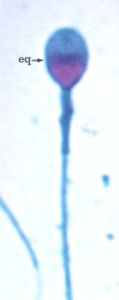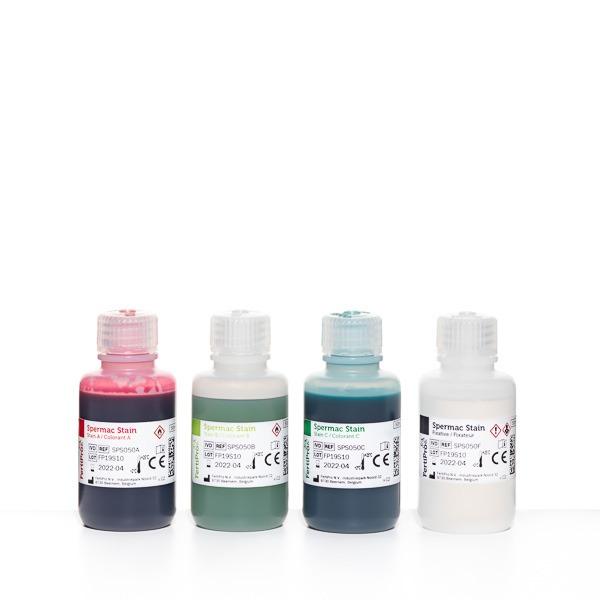Frequently Asked Questions: Spermac Stain
FAQ1: Can we mount slides coloured with Spermac Stain ?
No you can’t. If you want to keep slides for your archives, we suggest to make a few extra slides and store these away from light in a closed container. This way the slides will remain stable for longer periods.
FAQ2: Can Spermac Stain™ help in the detection of vacuoles in the sperm head?
There are three types of vacuoles in human sperm, the one is a result of the arrangement of the DNA in the head, and can only be seen on electron microscopy. However, a single large vacuole can occasionally be seen in this region of Papanicolaou stained spermatozoa.
Furthermore, the other two types of vacuoles can be observed on stained spermatozoa. The first are random distributed nuclear vacuoles, also called crater defects, and are mostly seen in the acrosome area.
The other type is called the “Diadem” defect. These vacuoles are usually situated in the equatorial region, they may be single but when they are multiple they often are in a line that resembles a diadem or crown encircling the head. The vacuoles are formed by invaginations of the nuclear membrane into the nuclear material, and are thus lined with nuclear membrane. They may be empty or filled with various cytoplasmic components, membranous, granular or vesicular material.
These vacuoles are pathological, being one of the major head defects, and they are especially very visible with Spermac staining. They may also be seen on phase contrast microscopy. The best way to see them is to over and under focus, and the vacuole changes from black to white. The defect is often found in conjunction with other defects as well.
FAQ3: Where is the “equatorial region” of the sperm cell?
The equatorial region is the widest part of the sperm cell head, just below the acrosome (in normal spermatozoa).

FAQ4: Is the use of a heated stage at 37°C as indicated in the instructions for use leaflet strictly necessary?
No as long as the sample is dry before the next step.

